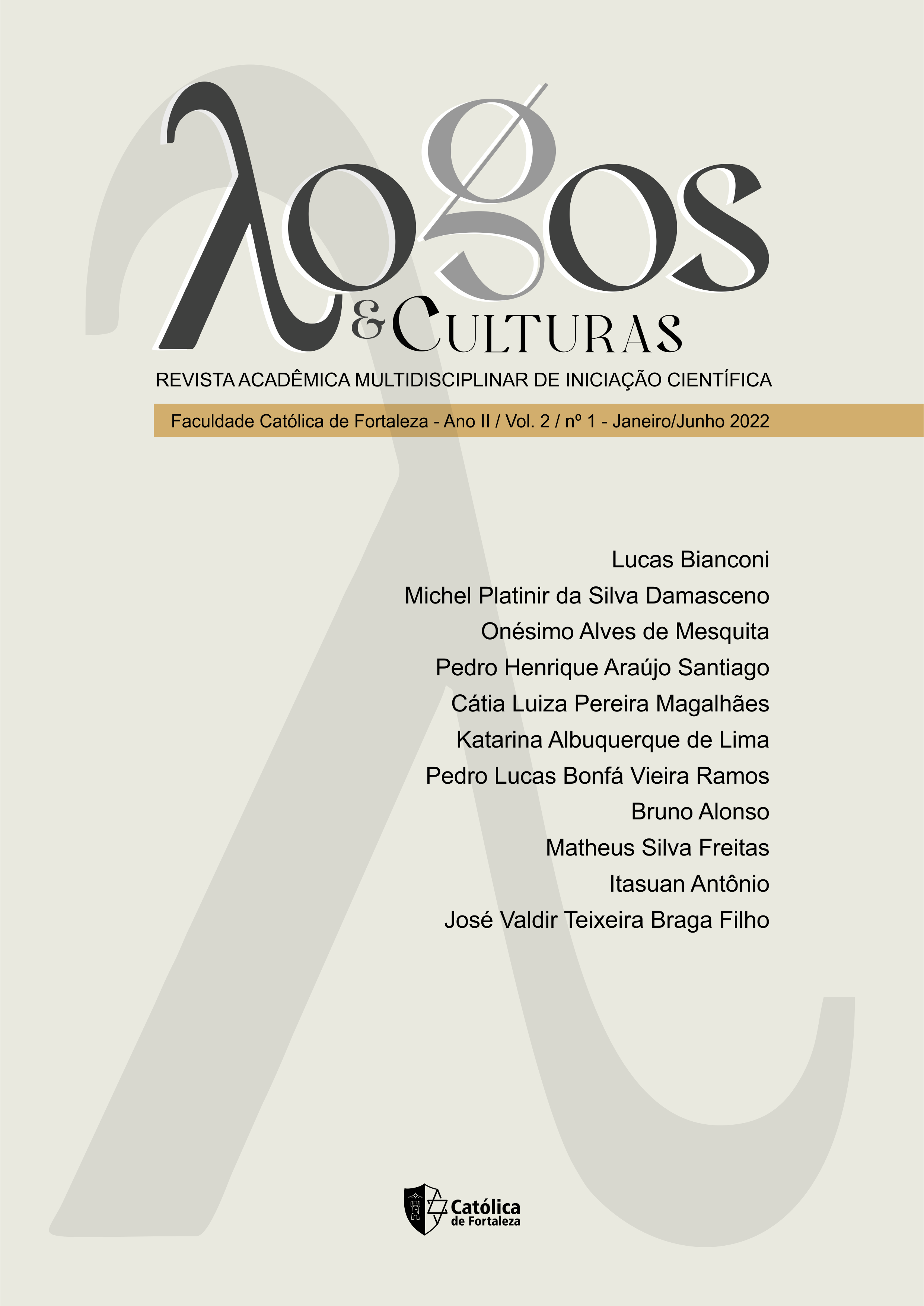Does time deceive us with the mask of space? Beauty and hope in youth according to a "philosophical pessimism"
Keywords:
Beauty. Hope. Youth. Pessimism. Schopenhauer. Mathias Aires.Abstract
Our object is the relationship, expressed particularly in a person's youth, between beauty and hope, and we will approach it from a perspective that we try to articulate here as that of a “philosophical pessimism”. Our main source for reconstructing a pessimistic philosophy is the thought of Schopenhauer (1788-1960), taken here as the starting point of our investigation. Precisely about our object, he maintains that children's heightened sensitivity to beauty fosters the hope that the future will be beautiful, and that such hope inevitably turns to disillusionment with the arrival of youth and the growing realization that life in space and time is actually vain. Some interpretive currents accuse such a conclusion of being subjectivist: it would derive from the melancholic state of mind of this author, it would only spread in a society depressed by a mood similar to his, and would not sustain itself outside the concepts of his doctrine of the Will. We will complement our approach with the analysis of the premises that the Brazilian philosopher Matias Aires (1705-1763) lists when sustaining practically the same conclusion as Schopenhauer; thus, taking into account that these authors wrote in completely different contexts and conceptual languages, and that one never knew the other's thinking, we will adopt a pessimistic and philosophical point of view that is objective, detached of an individual or collective mood, or of any specific doctrine.
References
AIRES, M. Reflexão sobre a vaidade dos homens. 2ª ed. São Paulo: Martins Fontes, 2004.
BEISER, F. C. Weltschmerz. Pessimism in German Philosophy, 1860-1900. New Tork: Oxford University Press, 2016.
INVERNIZZI, G. Il pessimismo tedesco dell’ottocento. Schopenhauer, Hartmann, Bahnsen E Mainlander e i loro Avversari. Firenze: La Nuova Italia, 1994.
JANAWAY, C. Pessimismo de Schopenhauer. In: JANAWAY, C. (Org.). The Cambridge Companion to Schopenhauer. England: Cambridge University Press, 1999. p. 318- 343.
LIMA, A. A. Introdução. In: AIRES, M. Reflexão sobre a vaidade dos homens. 2ª ed. São Paulo: Martins Fontes, 2004.
MAGEE, B. The Philosophy of Schopenhauer. New York: Oxford University Press, 1997.
MARGUTTI, P. História da filosofia do Brasil. O período colonial (1500-1822). São Paulo: Loyola, 2013.
SCHOPENHAUER, A. Da diferença das idades da vida. In: SCHOPENHAUER, A. Aforismos para sabedoria de vida. Tradução, prefácio e notas de Jair Barboza. 3ª ed. São Paulo: Martins Fontes, 2009a.
SCHOPENHAUER, A. O mundo como vontade e como representação. Segundo tomo: suplementos aos quatro livros do primeiro tomo. Tradução, apresentação, notas e índices de Jair Barboza. São Paulo: Editora Unesp, 2015.
SCHOPENHAUER, A. Parerga y Paralipómena II. Tradução de Pilar Lopez de Santa Maria. Madrid: Trotta, 2009b.
SHAPSHAY, S. Reconstructing Schopenhauer’s Ethics. Hope, Compassion, and Animal Welfare. New York: Oxford University Press, 2019.
Downloads
Published
Issue
Section
License
Copyright (c) 2022 Logos & Culturas Revista Acadêmica Multidisciplinar de Iniciação Científica

This work is licensed under a Creative Commons Attribution 4.0 International License.
De acordo com a Licença Creative Commons International 4.0, é possível:
1) Distribuir o material publicado em qualquer formato, desde que os créditos de publicação e referenciação sejam devidamente dados à Revista Logos & Culturas.
2) Os direitos autorais sobre os artigos, resenhas e traduções publicados são da Revista Logos & Culturas, bem como os direitos de primeira publicação.
3) Os autores que queiram publicar seus manuscritos na Logos & Culturas em outros veículos (capítulos de livro, por exemplo), devem referenciar devidamente à primeira publicação na Revista Logos & Culturas.
4) Os autores possuem pleno direito de divulgar seus manuscritos publicados na Revista Logos & Culturas em suas páginas pessoais, sendo recomendada à menção ao periódico.
Para conferir às determinações da Licença Creative Commons 4.0, acesse aqui.

